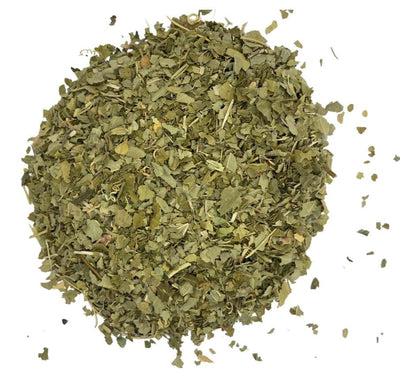Flowering Teas
Flowering tea is an experience that's more than just about taste. It is a ritual of sight, smell, and taste - a performance where you can watch a simple tea bud blossom into a beautiful flower, releasing aroma and flavour into the hot water. It’s truly an immersive and magical journey.
Flowering teas are an excellent option for a tea party or an afternoon tea session. Your guests will not only be surprised by the beautiful display of the tea but also by the exquisite taste of this luxurious beverage. Moreover, they can be used multiple times, and the taste often deepens with each infusion.

Flowering tea are also known as blossoming tea, tea roses, artistic tea, display tea or hand-tied tea is a type of tea that is made by hand-sewing tea leaves, preferably long silver needle leaves, into various shapes. These teas often contain edible flowers such as chrysanthemums, hibiscus, jasmine, marigold, lily, osmanthus, or rose, and can be flavoured with fruits, herbs, or spices. When steeped in hot water, the bundle of tea leaves unfurls, revealing a beautiful flower, resulting in a relaxing and exciting experience. The flowers in these teas usually do not contribute much to the flavour, although some like chrysanthemum, jasmine, and rose can be tasted. The creation of flowering teas is almost limitless and can be customized based on the tea master's imagination.
The History of Flowering Tea
Although not conclusively verified, it is believed that flowering teas have been crafted in China for centuries and were potentially served to Chinese royalty. Initially, these teas were created solely for aesthetic purposes and were not intended for consumption. However, with improvements in the quality of tea leaves used to produce them, they evolved into both an ornamental and beverage item. In the 1980s, more beautiful flowering teas began to emerge, and they gained popularity in the Western market during the early 2000s. Since then, their popularity has continued to rise.
How Flowering Tea is Made
Crafting flowering teas is truly an art form that requires skill and patience from expert tea masters. Unlike conventional tea bags, flowering teas are a unique experience that deserves appreciation for their intricate beauty and mastery behind them.
These teas are typically made using delicate tea buds, with white tea varietals being a popular choice in the Fujian region. First the tea leaves are laid flat and moistened. The moistened tea leaves are then shaped by hand and wrapped around food-safe string to form a bundle of about 20 leaves. One or more flowers may be added as well as flavouring to the bundle, which is then wrapped in cloth to help it retain its shape during the drying process.
The entire process of creating flowering teas is intricate and requires patience and skill from the tea masters who craft them.

Crafting flowering teas in a factory
The Symbolism of Flowers in Flowering Tea
Flowering teas not only offer a visual spectacle and a unique tasting experience, but they are also imbued with symbolism. Each flower used in the making of flowering tea carries a specific meaning in Chinese culture, adding a layer of depth to the tea drinking experience.
Jasmine: This is a highly revered flower in China and is often associated with love, beauty, and purity. Its sweet, intoxicating fragrance is known to promote relaxation and reduce stress. Jasmine adds a flavour and a showy appearance.
Rose: The rose symbolises love and passion in many cultures, and China is no exception. It's also associated with beauty and perfection and is often used in ceremonies and celebrations. It adds a red colour to the tea.
Chrysanthemum: In China, the chrysanthemum is a symbol of autumn and the joy of gathering at the end of harvest. Chrysanthemum is also associated with longevity and immortality.
Lily: The lily flower symbolises purity and modesty in Chinese culture. It's also associated with a happy union for 100 years, making it a popular flower in wedding bouquets.
Marigold: Known for its bright, sunshine-like colour, the marigold represents passion and creativity. It is also believed to bring good luck and positive energy.
Carnation: This flower is associated with love, fascination, and distinction. Different colours of carnations also carry different meanings. For example, pink carnations symbolise a mother's love.
Globe Amaranth: This bright red flower is connected to their ability to bring beauty and joy into our lives. They are believed to symbolise the unbreakable bond between two people.
Understanding these cultural symbolisms can add an extra layer of appreciation when savouring your cup of flowering tea. Each sip becomes not just a sensory experience but also a symbolic journey.

White tea with marigold, jasmine and globe amaranth
Cultural Significance of Flowering Teas
Flowering tea, with its artistry and intricate craftsmanship, holds a special place in tea culture. Beyond its beautiful appearance and delightful taste, the act of brewing and drinking flowering tea is a cultural practice filled with tradition and significance.
In Chinese culture, tea is more than just a beverage—it is a spiritual experience, a meditation, a moment to pause and enjoy the simplicity of life. The practice of drinking tea is considered an art form, often accompanied by traditional music, poetry, or painting, allowing one to immerse themselves in the beauty of the moment.
The art of flowering tea brewing, also known as the tea ceremony, is a traditional Chinese practice that has been around for centuries. It is a ritualistic process that emphasises respect, tranquillity, and purity. The act of brewing flowering tea in a clear teapot or glass and watching the tea leaves slowly unfurl to reveal a beautiful flower is a calming and mesmerising process. It is a moment of pause, a moment to appreciate the beauty of nature, the skill of the tea artist, and the magic of transformation.
The tea ceremony also symbolises harmony, peace, and enjoyment. It is a practice of mindfulness, of being fully present in the moment. As you watch the tea flower bloom and savour its delicate flavour, you are encouraged to let go of your worries and stresses and simply enjoy the experience.
In essence, flowering tea is more than just a beverage—it's an experience, a ritual, a tradition. It's a moment of calm in our busy lives, an opportunity to connect with ourselves and with nature. So, when you sip your next cup of flowering tea, remember to take a moment to appreciate the beauty of the tea flower, the skill of the tea master, and the tranquillity of the moment.

Brewing Methods and Pairings
The method of brewing flowering tea is fairly simple, but there are a few things to keep in mind to ensure you get the most out of your tea experience. The temperature of the water, the size of the teapot, and the brewing time can all affect the taste and presentation of the tea.
Water Temperature: The ideal water temperature for brewing flowering tea is between 85-90°C. Too hot, and the tea might taste bitter; too cold, and the tea might not fully open or reveal its full flavour.
Teapot Size: Since flowering tea expands and opens up into a flower, it's important to use a teapot or glass that's large enough to allow the tea to fully bloom.
Brewing Time: Depending on the type of tea, the brewing time can vary. Generally, it takes about 3-5 minutes for the tea to fully unfurl and infuse the water with flavour.
Steps:
1) Boil filtered water to 85-90°C.
2) Fill a glass teapot or large glass cup with the boiled water
3) Gently place the flowering tea into the water. Do not pour the hot water over the flowering tea as this may cause it damage.
4) Wait 3-5 minutes for the flower to open up. Then remove the flower to avoid a bitter taste to the tea
5) Blooms can be re-infused multiple times, this is dependant on the size of the teapot.
Pairings: Flowering tea can be enjoyed on its own or with food. The mild, floral flavours of flowering tea pair well with light foods like pastries, white cheeses, or fruit. Alternatively, you can also pair it with spicy or richly flavoured dishes, as the lightness of the tea can help cleanse the palate.

Flowering tea as a bloom, in a teapot and in a class cup.
Health Benefits of Flowering Teas
Flowering teas can be made from white, green or black tea leaves. These leaves all come from the same plant, Camellia sinensis. Tea has many scientifically proven benefits, some of which are listed below.
Contains antioxidants: Like traditional teas, flowering teas are rich in antioxidants that help fight free radicals and reduce inflammation in the body.
May aid digestion: Some types of flowering tea, such as marigold, have been shown to improve digestion by nourishing the liver and promoting healthy bowel movements.
Promotes relaxation: Theanine, a compound found in tea, has a calming effect on the body, helping to reduce stress and promote relaxation. Additionally, some flowers used in flowering tea, like lily, are known to help cure insomnia and soothe the nerves.
Good for the skin: Certain flowers added to flowering tea, such as jasmine and rose, are known for their skin benefits. They can help improve blood circulation and give a natural glow to the skin.
May improve brain function: Theanine in tea has also been shown to boost brain function, improving focus, mental clarity and mood.
May strengthen bones: Some studies suggest that regularly consuming tea may help improve bone density and reduce the risk of osteoporosis.
How to get Started with Flowering Teas
We offer a range of flowering teas for you to enjoy. Our selection includes black, white, and green varieties, each with its own unique flavour.
Individual blooms - These come individually presented in cute mini cubes. These come in individually boxed mini cubes.

Individually boxed flowering tea
Gift boxes - 8 flowering tea comes that come individually boxed and presented in a stunning magnetic gift box. These make a unique gift. Available in a white, green or black box (subject to availability).

Gift box of 8 flowering teas
Teapots- If you want to see the beauty of the tea bloom choose a glass teapot.
1.1 litre glass teapot
The Zen of Flowering Teas
Lastly, let's talk about the zen of flowering teas. Beyond their aesthetic appeal and delightful taste, flowering teas offer a unique opportunity for mindfulness and relaxation.
In today's busy world, it's easy to feel overwhelmed and disconnected. The practice of brewing and enjoying flowering tea can provide a moment of calm and connection. Watching the tea leaves slowly unfurl to reveal a beautiful flower is a reminder of the beauty of nature and the importance of taking the time to appreciate it.
The ritual of brewing flowering tea is also a form of meditation. As you watch the tea flower bloom, you are encouraged to let go of your thoughts and simply be in the moment. The act of drinking tea, too, can be a mindful practice. As you sip the tea, try to focus on the taste and aroma of the tea, and how it makes you feel.
In this way, flowering tea is not just a beverage—it's a tool for mindfulness and relaxation. Whether you're a long-time tea lover or a newbie, we hope that your journey with flowering tea brings you joy, peace, and a deeper appreciation for the beauty of nature.
Flowering tea is a treasure in the world of tea. Not only does it taste delightful, but the artistry that goes into making each bloom is truly admirable. It’s an experience that bridges the senses, offering an unrivalled visual spectacle and a gratifying taste. It serves as a reminder of how something simple can turn into something extraordinary, much like the humble tea leaves that transform into a breathtaking floral bloom.
Whether you are a tea connoisseur or a casual drinker, flowering tea is something worth trying. Its allure goes beyond the tea culture and seeps into the realm of art and beauty. The blooming process is indeed an engaging and calming experience, a dance of nature unfolding before your very eyes. Each tea flower is unique, each unfolding is a spectacle, and every sip is a new discovery.
While it requires a bit of patience and a tranquil state of mind, the result is absolutely worth it. It’s an intimate moment between you and the tea. As you watch it bloom, smell its subtle fragrances, and taste its light yet complex flavours, it’s hard not to be enchanted by the magic that is flowering tea. This beautiful beverage has the power to transform a mundane moment into something truly special.
With this in-depth look at flowering tea, we hope we've sparked your interest in this fascinating form of tea. Maybe you’ll decide to try it yourself, to gift it to a loved one, or to incorporate it into your daily ritual. However you choose to enjoy flowering tea, it’s bound to bring you a moment of peace, a splash of beauty, and a sip of pure delight.
Thank you for taking this journey with us into the mesmerising world of flowering tea. Happy brewing!








